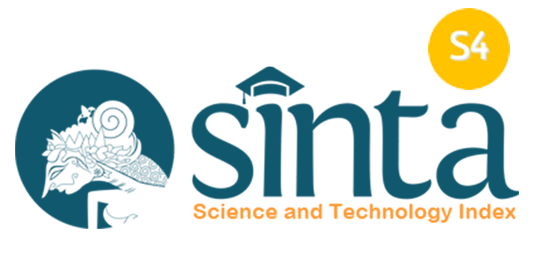Relativity of Peers: Learning Efficiency of Secondary Students
Abstract
Keywords
Full Text:
PDFReferences
Ahmad, C. V. (2021a). Causes of students’ reluctance to participate in classroom discussions. ASEAN Journal of Science and Engineering Education, 1(1), 47-62.
Ahmad, C. V. (2021b) College Students' Perspective Towards Lecturers' Work Ethics. Indonesian Journal of Educational Research and Technology, 1(1), 27-30.
Betts, Julian R., and Jamie L. Shkolnik. (2010). The Effects of Ability Grouping on Student Achievement and Resource Allocation in Secondary Schools. Economics of Education Review, 19, 1–15.
Bilad, M. R. and Prayogi, S. (2021). Portfolio Workbook as an Effective Method for Student-Centered Learning of Chemical Engineering Principles. ASEAN Journal of Science and Engineering Education, 1(1), 31-36.
Bittner, E. A. C., and Leimeister, J. M. (2014). Creating shared understanding in heterogeneous work groups: Why it matters and how to achieve it. Journal of Management Information Systems, 31(1), 111-144.
Carrell, Scott E., Bruce I. Sacerdote, and James E. West. (2013). From natural variation to optimal policy? the importance of endogenous peer group formation. Econometrica, 81(3), 855–882.
Greer, J. E., Mccalla, G., Collins, J. A., Kumar, V. S., Meagher, P., and Vassileva, J. (1998). Supporting peer help and collaboration in distributed workplace environments. International Journal of Artificial Intelligence in Education (IJAIED), 9, 159-177.
Lewis, C. (1978). Adolescence and youth: Psychological development in a changing world. PsycCRITIQUES, 23(1), 45.
Liu, C. H., and Matthews, R. (2005). Vygotsky's Philosophy: Constructivism and Its Criticisms Examined. International Education Journal, 6(3), 386-399.
Jindal, R., Leekha, M., Manuja, M., and Goswami, M. (2020). What makes a better companion? towards social and engaging peer learning. In Proceedings of the Twenty-fourth European Conference on Artificial Intelligence, IOS Press, Santiago de Compostela, Spain, 1-8.
Jizat, N. A. M., and Sulong, M. S. (2021). Lecturer perspective on informal learning activities. Indonesian Journal of Educational Research and Technology, 1(1), 23-26.
Kimbrough, E. O., Mcgee, A. and Shigeoka, H. (2017). How do peers impact learning? An experimental investigation of peer-to peer teaching and ability tracking. National Bureau of Economic Research, ,16-31 (https://www.nber.org/system/files/working_papers/w23439/w23439.pdf, retrieved on 10 April 2021).
Maryanti, R., Nandiyanto, A. B. D., Hufad, A., and Sunardi, S. (2021). Science education for students with special needs in indonesia: From definition, systematic review, education system, to curriculum. Indonesian Journal of Community and Special Needs Education, 1(1), 1-8.
Müller, C. M., Hofmann, V., Begert, T., and Cillessen, A. H. (2018). Peer influence on disruptive classroom behavior depends on teachers' instructional practice. Journal of Applied Developmental Psychology, 56(2018), 99-108.
Samantray, A., and Riccaboni, M. (2020). Peer influence of production and consumption behaviour in an online social network of collective learning. Online Social Networks and Media, 18, 100088.
Sari, N. M., and Faiz, N. S. M. (2021). Internationalisation of Higher Education: The Activity–Process Approach at Universiti Tun Hussein Onn Malaysia. Indonesian Journal of Educational Research and Technology, 1(1), 7-10.
Steinberg, L., and Monahan, K. C. (2007). Age differences in resistance to peer influence. Developmental Psychology, 43(6), 1531.
Supovitz, J., Sirinides, P., and May, H. (2010). How principals and peers influence teaching and learning. Educational Administration Quarterly, 46(1), 31-56.
You, S. (2011). Peer influence and adolescents’ school engagement. Procedia-Social and Behavioral Sciences, 29(2011), 829-835.
DOI: https://doi.org/10.17509/ajsee.v1i2.33372
Refbacks
- There are currently no refbacks.
Copyright (c) 1970 Universitas Pendidikan Indonesia

This work is licensed under a Creative Commons Attribution-ShareAlike 4.0 International License.














